When: Friday 27 Jan 2012; 1:30-4:30pm
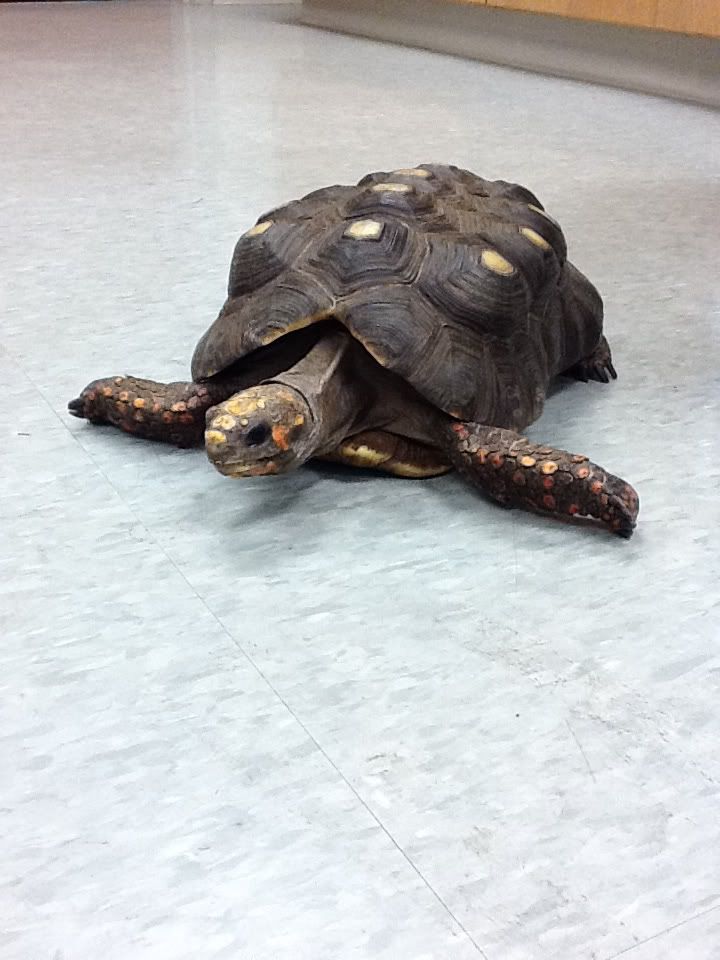
What We Did/Background: This week was all about the Testudines, or turtles. These awesome creatures have been around for a LONG time - the first definitive turtle was Proganochelys from 210 million years ago! Today, 323 species of turtles are known to exist and compose 14 families. Turtles can be found in almost any habitat, on land or in water, but are not found on Antarctica and in the extreme artics. Overall, we looked at turtle anatomy, learned about diversity, and saw some live turtles!
ANATOMY - Skeleton
If you envision a turtle, chances are you see a head, limbs, and tail sticking out of a large shell. While most shells just look like big domes, they are actually pretty complex. The top (dorsal) shell is called a carapace while the bottom (ventral) is a plastron. Both the carapace and plastron are composed of bones and keratinous scales called scutes. If you look at the underside of the carapace, you can also see ribs fused with vertebrae.

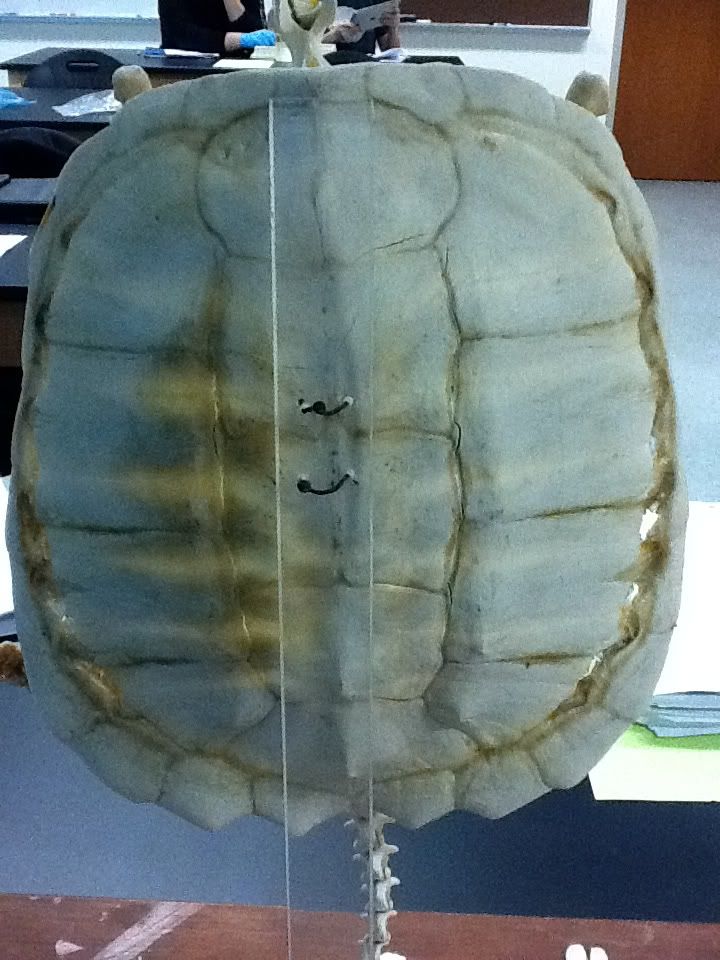
Dermal bones

Plastron internal
Like other reptiles, some turtles can seasonally shed both scales and scutes. One preserved specimen gave an example of scute loss (with the help of Dr. Sheil):
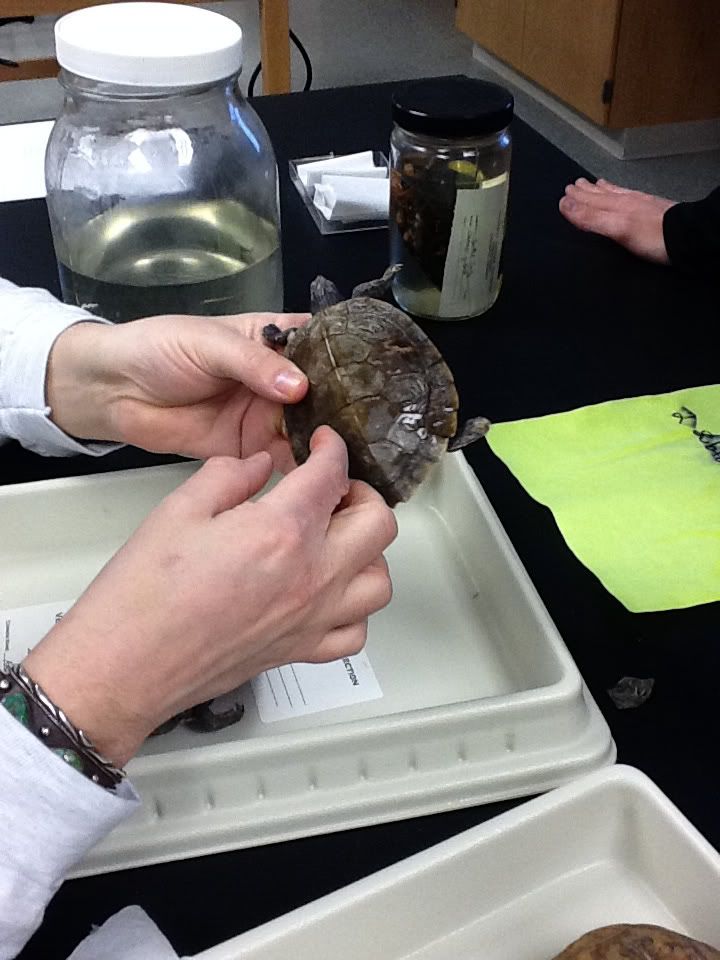
ANATOMY - Skulls
Turtles have anapsid skulls without temporal fenestrae, or holes behind the eyes (see the end of last week's blog). Below is a ventral, or underside, view of a turtle skull. The black markings indicate different bones - there are 10 here, just on the ventral side!
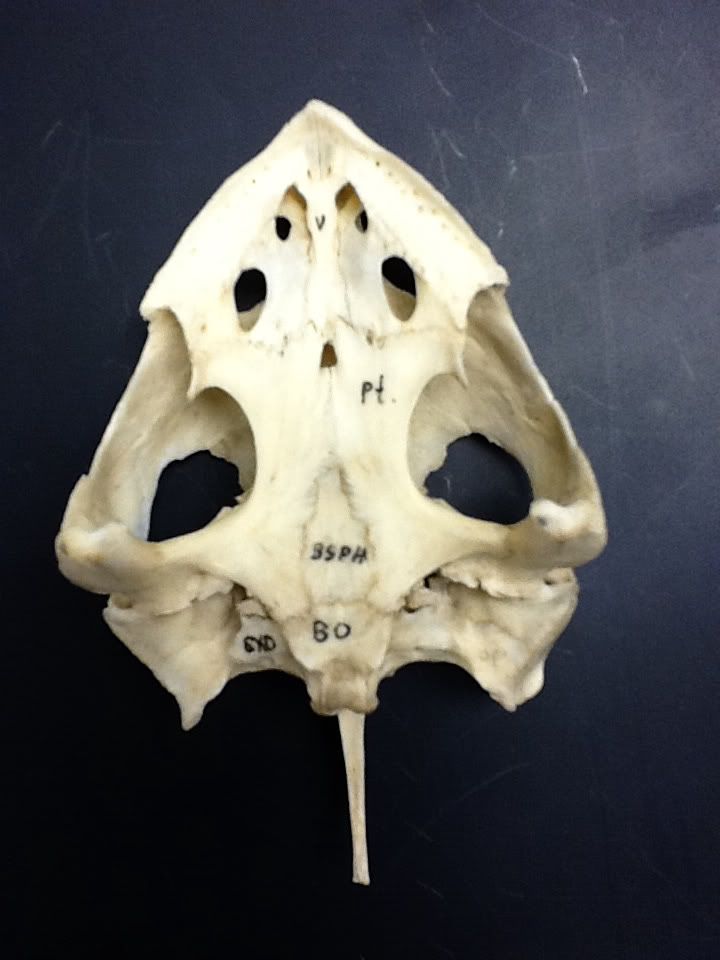
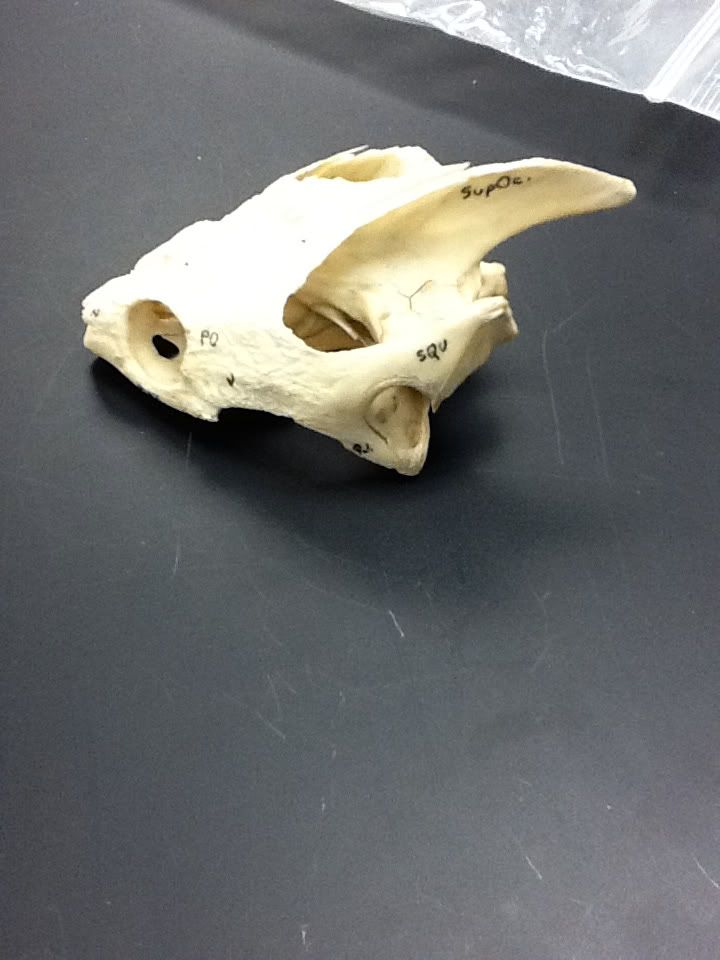
Here is a side (or lateral) view of a skull. Notice the big pointy bone towards the rear - this is the supraoccipital bone. This particular species emulates a temporal emargination, or a big gap between bones at the skull base where the supraoccipital bone is.
ANATOMY - Reproduction
All turtles are oviparous, meaning the mother does not house maturing embryos. The embryos develop inside a hard-shelled cleidoic egg (see last lab for more!). Male turtles have a copulatory organ and have slightly concave (or indented) shells to help position themselves on the female shell during copulation. The sex of a turtle can also be determined by gently pulling out the tail and noting the location of the cloaca. On males, the cloaca will be beyond the posterior end of the carapace, and the tails are more robust. Females have smaller tails and the cloaca does not pass the outer margin of the carapace.
Below is a picture of a male turtle. If you look at the posterior end, there's no need to tell you why this is a male.

DIVERSITY
Overall, turtles are divided into 2 groups: Pleurodira and Cryptodira. The main distinction between these two clades is that the Pleurodira move their heads to the side of the carapace as a defensive posture while the Cryptodira scrunch their head in an S-curve that draws the head directly into the carapace. Other traits that characterize these clades involve the “hips” and jaws. Pleurodirans have their pelvic girdles fused to the plastron while the cryptodirans have a flexible articulation (or joint) of the pelvic girdle with the plastron. The jaws of cryptodirans connect to the otic (ear/hearing) capsule while the jaws of pleurodirans are joined to the pterygoid (a bone on the ventral side of the upper half of the skull, essentially where our palate is). Recent molecular data also separates these clades.
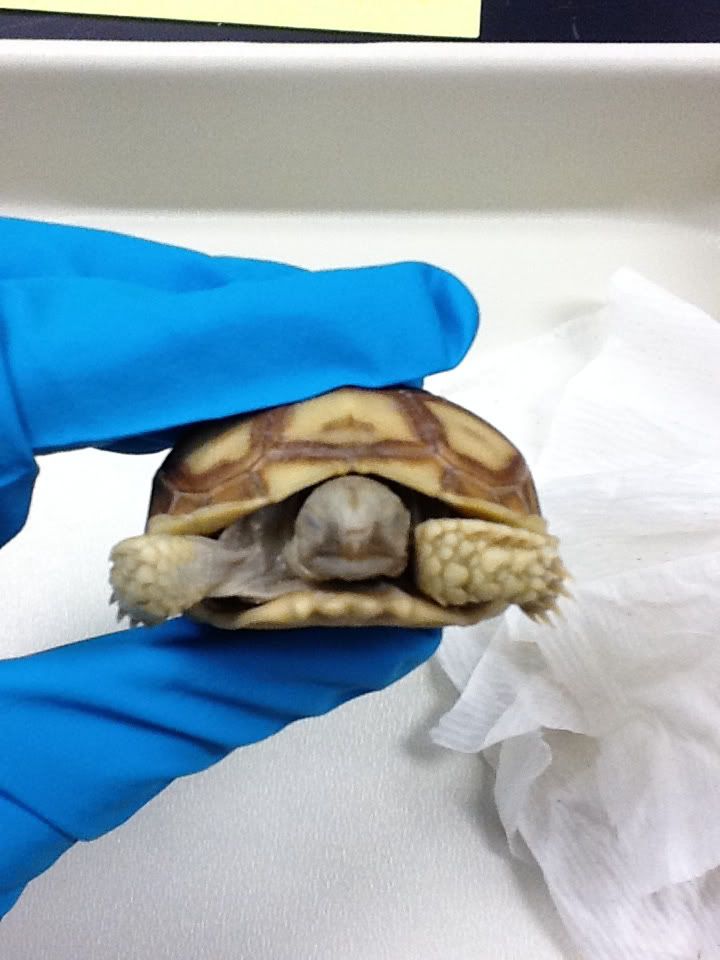
A cryptodiran demonstrating its mastery at hide-and-seek.
In our lab, we had specimens of Cheloniidae (hard-shelled seaturtles), Chelidae (Australoamerican side-neck turtles), Chelydridae (snapping turtles), Emydidae (cooters, sliders, American box turtles), Kinosternidae (mud & musk turtles), Podocnemidae (Madagascan big-headed & American side-neck turtles), Testudinidae (tortoises), and Trionychidae (soft-shell turtles). Of these, only Chelidae and Podocnemidae are pleurodirans.
Cheloniidae (hard-shelled seaturtles) (Cryptodira)

These turtles range from the tropics to arctic and subarctic oceans. Their forelimbs act as flippers and are used in a figure-8 motion to swim. Cheloniids have amazing site fidelity, where mothers return within meters from where they were hatched. These sea turtles have a dietary range from seagrass to crustaceans to sponges, depending on the species. They are long-lived, reaching sexual maturity after 25 years.
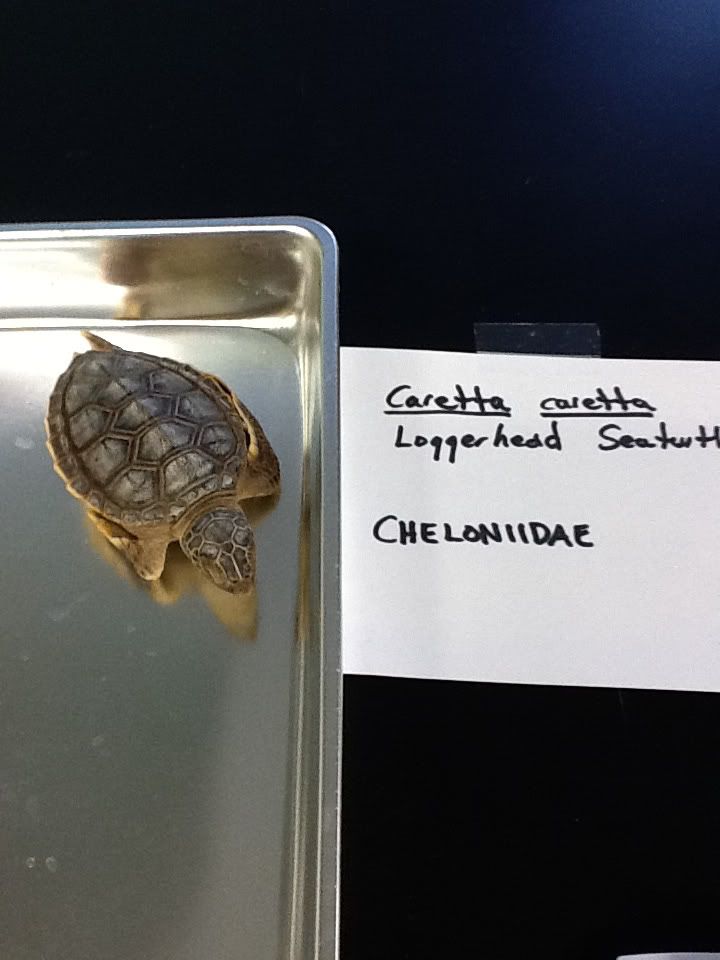
Caretta caretta - loggerhead sea turtle
Chelidae (Australoamerican side-neck turtles) (Pleurodira)

This family can only be found in the southern hemisphere, specifically in South America, Australia, and Indonesia. All have a flattened skull & shell and are primarily aquatic. Some species of Chelidae have extremely long necks. Some genera include Phrynops and Chelodina.

Chelodina spp.
Chelydridae (snapping turtles) (Cryptodira)

These turtles are naturally found in eastern North America, Mexico, Central America, and northern South America. One prominent feature of these turtles is their greatly reduced, cruciform-shaped plastron. Relative to the body, chelydrids have the longest tails. The 2 genera of this family are Chelydra (common snapping turtle) and Macrochelys (alligator snapping turtle). The common snapping turtle is native to Ohio while the alligator snapping turtle is only from the southern United States. Macrochelys has prominent ridges along its carapace, 3-4 supramarginal scutes, and a tongue lure used to attract prey while Chelydra has none of these characteristics.
Chelydra serpentina

Emydidae (cooters, sliders, American box turtles) (Cryptodira)

This family is broken up into 2 subfamilies: Emydinae and Deirochelinae. Emydinae consists of Calemys, Clemmys, Emys, Emydoidea, Glyptemys, and Terrapene. Deirochelinae contains the genera Chrysemys, Deirochelys, Graptemys, Malaclemmys, Pseudemys, and Trachemys. The family characteristics include a large plastron that is occasionally hinged. This allows the head and forelimbs to not only be protected but completely enclosed within the shell. These turtles exhibit sexual dimorphism, where the females can be twice as big as the males. As a whole, emydids compose the greatest Ohio diversity of turtles.
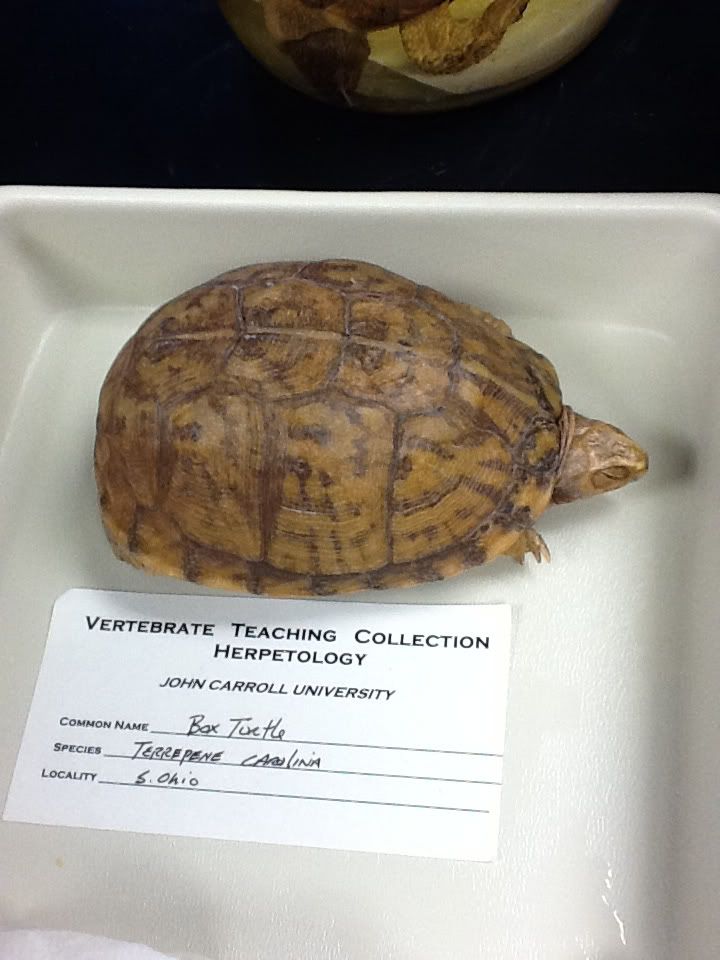
Box turtle - Terrepene carolina
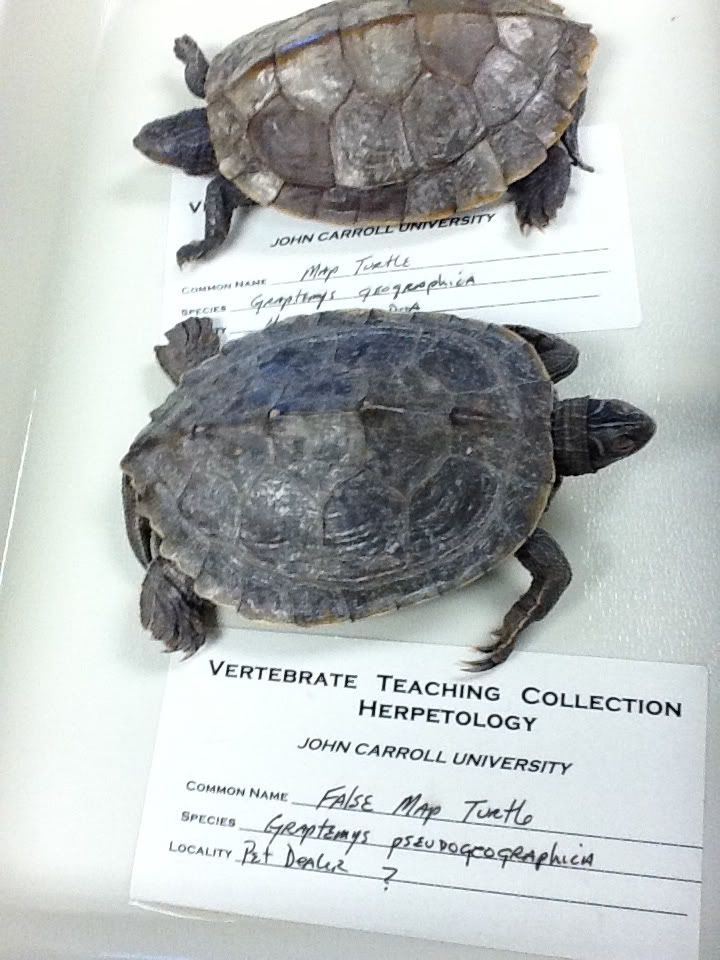
Graptemys geographica and G. pseudogeographica
Kinosternidae (mud and musk turtles) (Cryptodira)

This family of turtles is native to North, Central, and the northern part of South America. They are some of the smallest turtles and have oblong domed carapaces with less than 10 marginal scutes. While these turtles are aquatic and are commonly found walking on the bottom of aquatic surfaces, they hibernate on land.

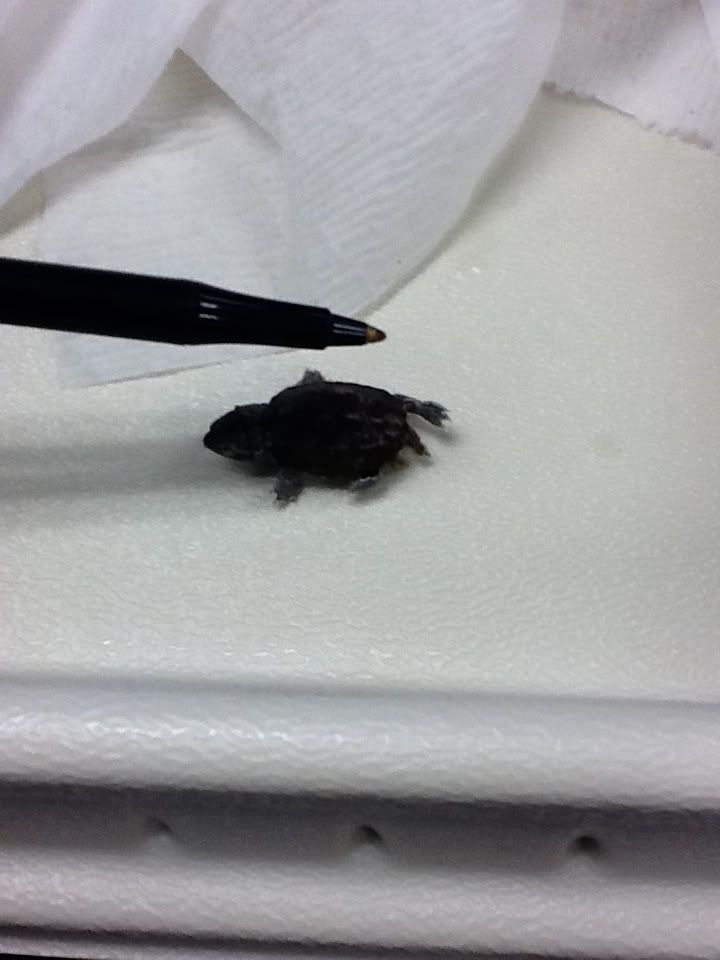
Sternotherus odoratus - stinkpot baby (so small!)
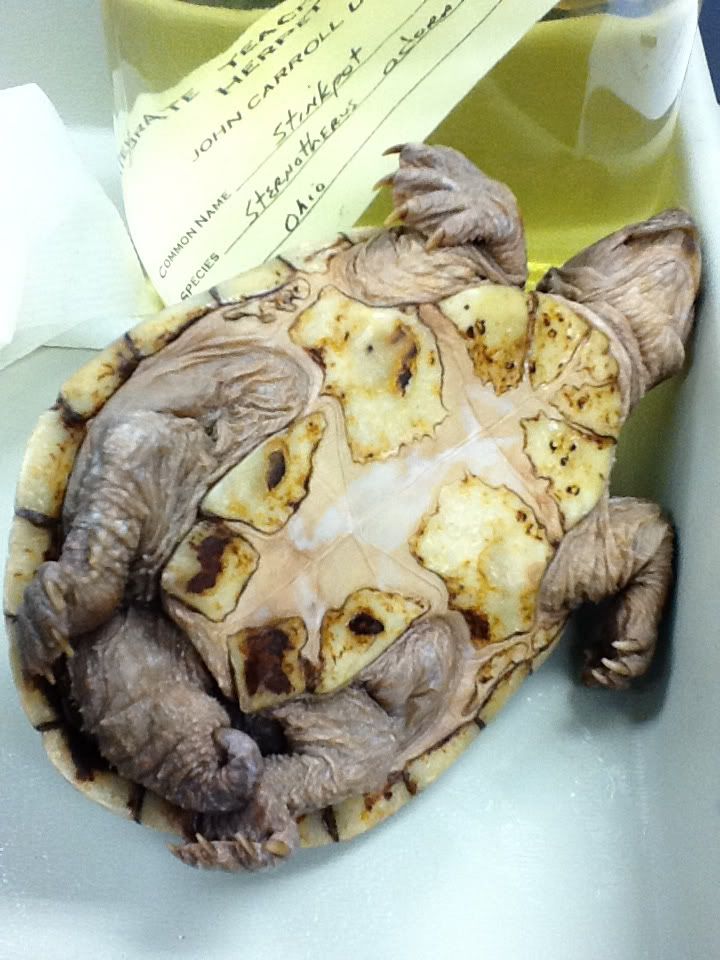
Stinkpot - notice the highly reduced plastron
Podocnemidae (Madagascan Big head turtles & American side neck turtles) (Pleurodira)

Podocnemidae is native to northern South America and Madagascar. These opportunistic carnivores and herbivores are found in rivers, marshes, and swamps. Podocnemids have large bodies and heads with powerful jaws.

Testudinidae (tortoises) (Cryptodira)

The tortoises are large, terrestrial turtles that occupy North and South America, Europe, Asia, Indonesia, Galapagos, Seychelles, and Madagascar. Members of this clade have large, heavy, highly domed carapaces with large, armored scutes. They occupy grasslands, deserts, and other dry environments. These herbivores live to a very old age and have long stages of incubation and maturation.

Geochelone sulcata, aka Samson the tortoise! No offense to the other turtles in our lab, but Samson was the highlight of the day.
Trionychidae (soft-shell turtles) (Cryptodira)

The soft shelled turtles are from North America, southeast Asia, New Guinea, and Africa. There are two subfamilies - Trionychinae and Cyclanorbinae. These turtles are flatter than most turtles and lack dermal scutes; their outer covering is thick and leathery, helping them cutaneously respire (or, essentially, breathe through their skin). These opportunistic omnivores have a long snout and are very efficient swimmers.
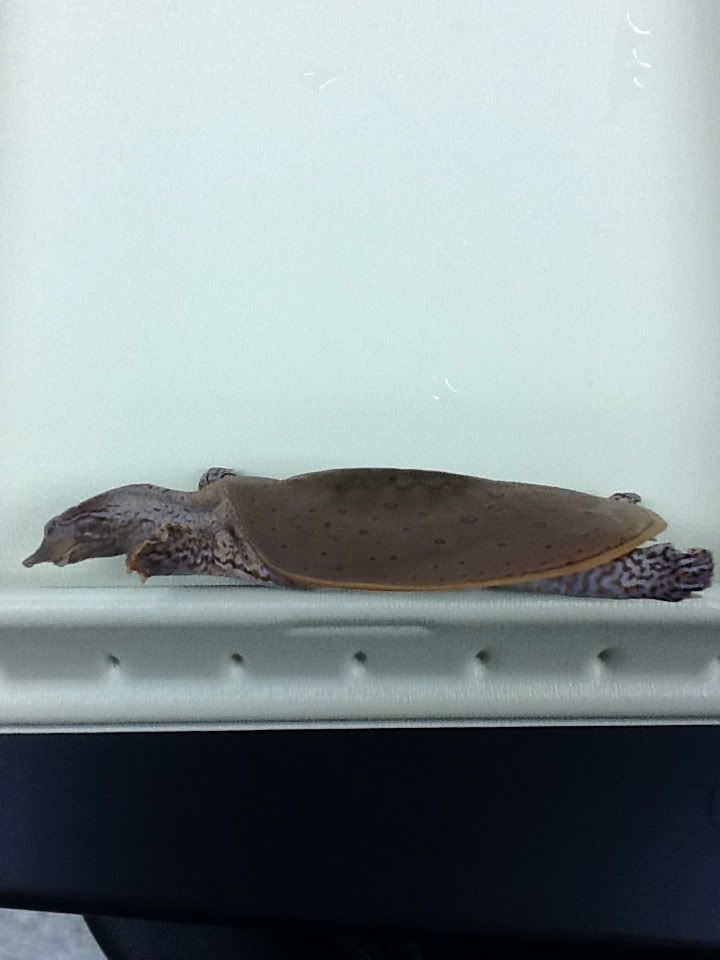
A lateral view of a softshell turtle. The lips that can be seen on the turtle help identify this family from its sister Carrettochelyidae.
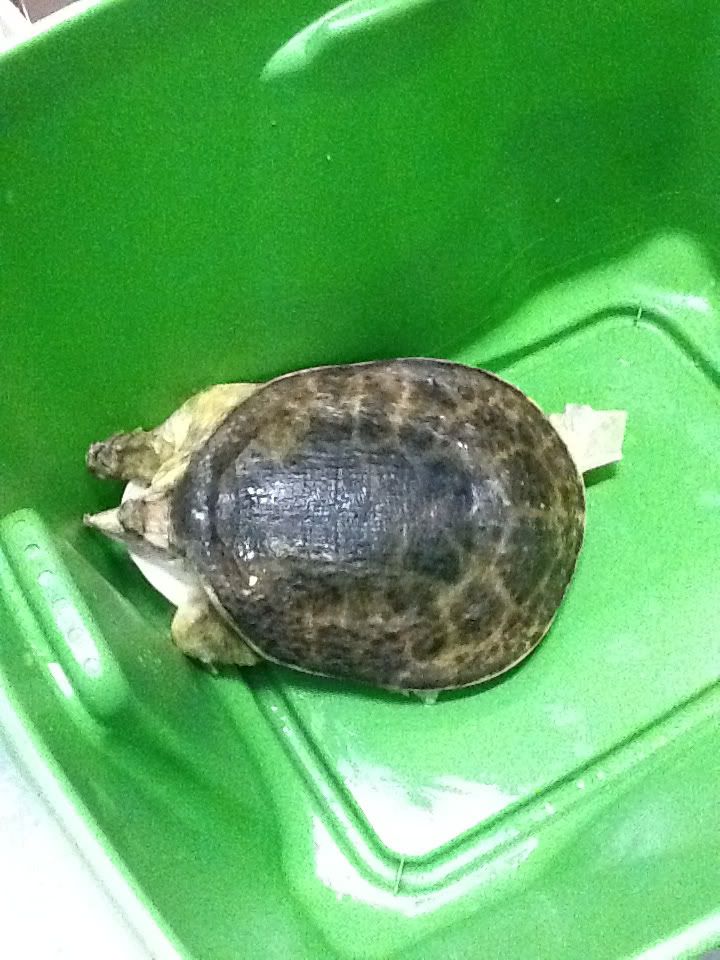
Apalone ferox, aka the soft-shelled Zagnut!
.

Ohio diversity!
Of the 300+ species of turtles, only 12 are native to Ohio:
Chelydra serpentina, Sternotherus odoratus, Apalone spinifera, A. mutica, Chrysemys picta marginata, Clemmys guttata, Emydoidea blandingii, Graptemys geographica, G. pseudogeographica, Pseudemys concinna, Terrapene carolina, and Trachemys scripta.
Chelydra is in Chelydridae, Sternotherus in Kinosternidae, Apalone in Trionychidae, and the rest in Emydidae.
No comments:
Post a Comment